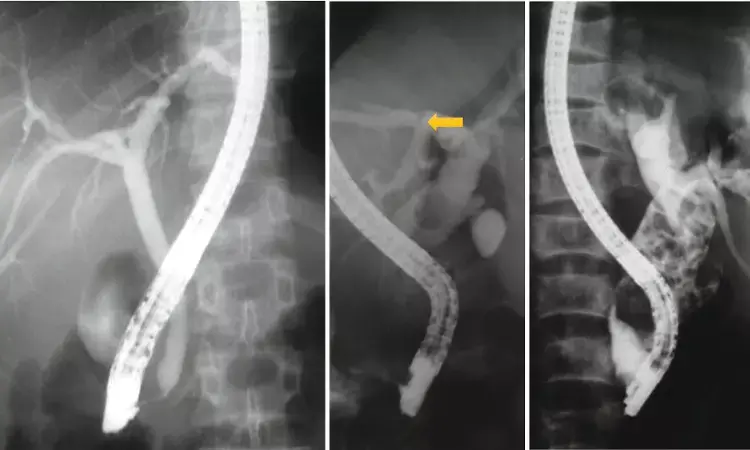- Home
- Medical news & Guidelines
- Anesthesiology
- Cardiology and CTVS
- Critical Care
- Dentistry
- Dermatology
- Diabetes and Endocrinology
- ENT
- Gastroenterology
- Medicine
- Nephrology
- Neurology
- Obstretics-Gynaecology
- Oncology
- Ophthalmology
- Orthopaedics
- Pediatrics-Neonatology
- Psychiatry
- Pulmonology
- Radiology
- Surgery
- Urology
- Laboratory Medicine
- Diet
- Nursing
- Paramedical
- Physiotherapy
- Health news
- Fact Check
- Bone Health Fact Check
- Brain Health Fact Check
- Cancer Related Fact Check
- Child Care Fact Check
- Dental and oral health fact check
- Diabetes and metabolic health fact check
- Diet and Nutrition Fact Check
- Eye and ENT Care Fact Check
- Fitness fact check
- Gut health fact check
- Heart health fact check
- Kidney health fact check
- Medical education fact check
- Men's health fact check
- Respiratory fact check
- Skin and hair care fact check
- Vaccine and Immunization fact check
- Women's health fact check
- AYUSH
- State News
- Andaman and Nicobar Islands
- Andhra Pradesh
- Arunachal Pradesh
- Assam
- Bihar
- Chandigarh
- Chattisgarh
- Dadra and Nagar Haveli
- Daman and Diu
- Delhi
- Goa
- Gujarat
- Haryana
- Himachal Pradesh
- Jammu & Kashmir
- Jharkhand
- Karnataka
- Kerala
- Ladakh
- Lakshadweep
- Madhya Pradesh
- Maharashtra
- Manipur
- Meghalaya
- Mizoram
- Nagaland
- Odisha
- Puducherry
- Punjab
- Rajasthan
- Sikkim
- Tamil Nadu
- Telangana
- Tripura
- Uttar Pradesh
- Uttrakhand
- West Bengal
- Medical Education
- Industry
Abdominal Imaging and Lab Indices help rule out Choledocholithiasis in Kids: Study

Diseases of the gallbladder and biliary tree are conditions that physicians routinely encounter, and they can present multiple diagnostic and treatment dilemmas. In a recent study, researchers have reported that pediatric common bile duct stones may be predicted with abdominal imaging and laboratory indices. The research has been published in the journal Gastrointestinal Endoscopy on February 01, 2021.
The management of suspected choledocholithiasis remains a challenge in pediatric endoscopy. Several recommendations are available for adult patients however, it is unknown which pediatric patients are most likely to benefit from Endoscopic retrograde cholangiopancreatography (ERCP) for evaluation of choledocholithiasis. Therefore, researchers of Dr Douglas S. Fishman, MD and his team conducted a study to assess the adult-based criteria in the evaluation of pediatric patients with choledocholithiasis. They also evaluated the role of conjugated (or direct) bilirubin to improve the sensitivity of detecting choledocholithiasis.
It was a prospective, multicenter study in pediatric patients as part of the Pediatric ERCP Database Initiative (PEDI) with additional post-hoc analysis of updated guidelines. Researchers enrolled 95 children (aged <19 years) among which, 69 had choledocholithiasis confirmed at ERCP and 26 had no stones at ERCP. When stones were present, they were identified and removed 72% of the time, and procedural success varied by site (ranging from 33% to 100%).
Key findings of the study were:
- In the 24 hours before ERCP, the researchers noted that the patients who had a stone removed were found to have higher total bilirubin (median, 2.8 vs 1.7 mg/dL), direct or conjugated bilirubin (median, 1.5 vs 0.7 mg/dL), and direct or conjugated bilirubin >2 mg/dL (32% vs 8%) vs patients who did not have a stone removed.
- At ERCP, they noted that the patients who had a stone removed were more likely to undergo a cholangiogram (88% vs 27%) rather than computed tomography (8% vs 75%).
- They observed similar adverse event rates in both groups.
- They found no significant differences between the two groups with the pre-procedure transabdominal US.
- They found that the use of the American Society for Gastrointestinal Endoscopy 2019 high-risk criteria improved specificity to 91% and positive predictive value (PPV) to 86%; inclusion of direct or conjugated bilirubin ≥2.1 mg/dL was found to improve specificity to 92% and PPV to 91% but a sensitivity of only 20% to 69%.
The authors concluded, "Abdominal imaging and lab indices may be used to predict pediatric choledocholithiasis with varying sensitivity and specificity. Pediatric specific guidelines may allow for improved stone prediction compared with existing adult recommendations."
For further information:
https://www.giejournal.org/article/S0016-5107(21)00091-2/pdf
Medical Dialogues Bureau consists of a team of passionate medical/scientific writers, led by doctors and healthcare researchers. Our team efforts to bring you updated and timely news about the important happenings of the medical and healthcare sector. Our editorial team can be reached at editorial@medicaldialogues.in.
Dr Kamal Kant Kohli-MBBS, DTCD- a chest specialist with more than 30 years of practice and a flair for writing clinical articles, Dr Kamal Kant Kohli joined Medical Dialogues as a Chief Editor of Medical News. Besides writing articles, as an editor, he proofreads and verifies all the medical content published on Medical Dialogues including those coming from journals, studies,medical conferences,guidelines etc. Email: drkohli@medicaldialogues.in. Contact no. 011-43720751


